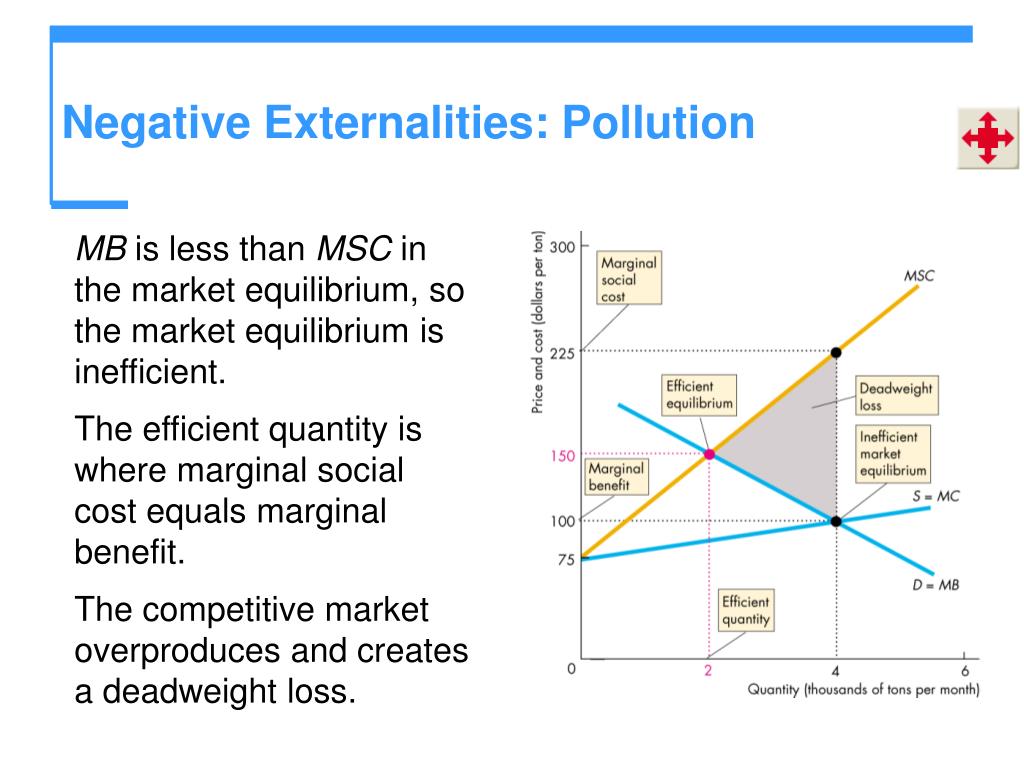

- #Positive and negative externalities examples how to#
- #Positive and negative externalities examples software#
When there is a positive externality, too little of the action is undertaken. A positive externality arises when one person’s or firm’s action bestows benefits on others.If others are also able to benefit from that knowledge without paying for it (for example, after the expiry of a patent), they are beneficiaries of a positive externality. As another example, suppose that a firm engages in research and development and creates new knowledge.
#Positive and negative externalities examples software#
For example, writers of open-source software create a social benefit that is in excess of the private benefit that they personally obtain. We call this a positive externalities The direct benefit bestowed by one person’s actions on others in society. Congestion of public roads or public parks is another instance of a negative externality.īy contrast, there are also occasions when an action bestows an external benefit on third parties. Pollution is the classic example of a negative externality, but there are others. Because the action of driving imposes a cost, we call this a negative externalities The direct cost imposed by one person’s actions on others in society. The gap between the two is a measure of the size of the externality. In our earlier example of driving, the marginal social cost was larger than the marginal private cost. These changes in prices make others in the market better or worse off. Whenever we take part in market transactions, we have effects (usually tiny effects but effects nonetheless) on market prices. The extra commute is not an externality imposed on you by the firm.)įinally, the effect must not operate through prices. Suppose, for example, that a firm offers you a job, but to get to that job you now must spend a longer time commuting.

(“Directly” here means that the effect doesn’t come about because of an induced change in behavior. It could be something that affects the profits of a firm. It could be something that affects the health or happiness of an individual. In addition, the action must directly affect another individual’s well-being or a firm’s profits. In most cases, the action is associated with production by a firm or consumption by a household. The action could be taken by an individual (say, smoking a cigarette) or a firm (dumping toxic waste into a river). Good weather is not an example of an externality. Toolkit: Section 17.19 "Externalities and Public Goods"Īn externality occurs when one person takes an action that directly affects another’s welfare, but the effect does not operate through prices.Īn externality must come from an action-something that somebody does. Economists say that there is an externality The direct cost imposed or direct benefit bestowed by one person’s actions on others in society. If they choose to drive, this action affects the well-being of others. In our Mexico City example, people decide whether or not to drive.
#Positive and negative externalities examples how to#
Economic policies focus on how to adjust those incentives so that there is a better match between individual and social aims.īefore discussing these policies in detail, we look again at the problem of the social dilemma, focusing now on the actions that people choose to take. A social dilemma arises when individual incentives are not well aligned with the interests of society as a whole. Now that we have diagnosed the problem, how do we fix it? The economist’s answer is that we must change people’s incentives. Thus actions that are individually optimal are damaging to society as a whole. But the social costs should matter as well.

Individuals and firms take into account only private costs when making decisions.


 0 kommentar(er)
0 kommentar(er)
